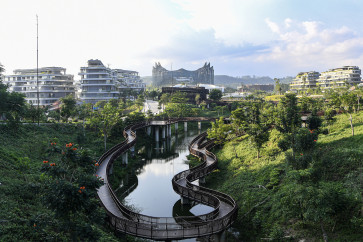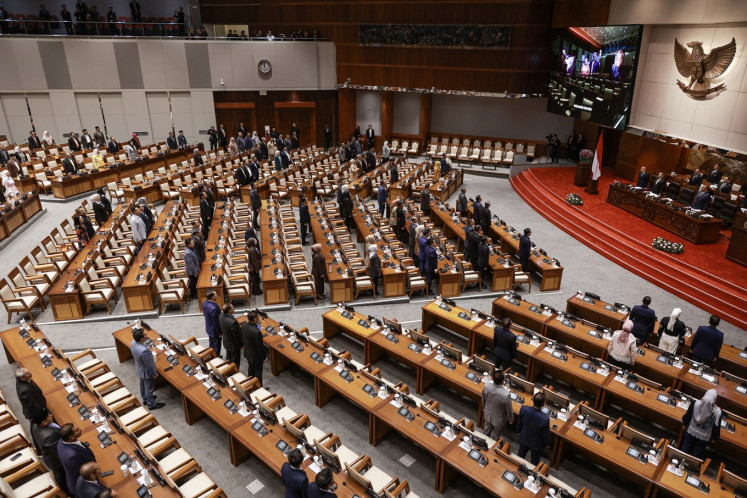Popular Reads
Top Results
Can't find what you're looking for?
View all search resultsPopular Reads
Top Results
Can't find what you're looking for?
View all search resultsThe elephant and the ant, a fable for traffic
Most Indonesian children have heard of the fable of the elephant and the ant
Change text size
Gift Premium Articles
to Anyone
M
ost Indonesian children have heard of the fable of the elephant and the ant. Like many other children's stories, it is didactic. The moral of the elephant and ant story is that being small does not necessarily mean being inferior. The ant beats the elephant by crawling inside the elephant's ear, making the big animal very uneasy, until it runs around helplessly before collapsing to the ground.
I use the story as a metaphor for what happens on Jakarta's roads. Cars are the elephants, and motorbikes are the ants. While it takes guile and wisdom for the ant to beat the elephant, it takes recklessness and ignorance for motorbikes to overwhelm cars.
Who has not sensed the persistent increase in the number of motorbikes lately? Statistics at the end of 2008 show the number of motorbike users soared to more than 5 million out of a city population of 9 million.
Not only is the number overwhelming, but motorbike manoeuvres on the road are also amazing.
You are driving on a spacious three-lane road. You think it is ideal and convenient. But not a meter of asphalt is left unused. Feeling superior in their compactness, motorcyclists zigzag and weave through the seemingly stationary cars, and before you know it, they are already ahead of the cars. Car drivers would be wise to always check the rearview and wing mirrors before deciding to switch lanes. If not, you'll get an unpleasant surprise in the form of an ant moving toward your ear.
You are driving on a two-way street with only one lane each way with no concrete divider to mark the separation, only the painted yellow line. You would think the line would be a self-explanatory guide on where to safely position your vehicle. Once again, not a single meter of the asphalt is left unused, even if that means the riders have to drive out of their own lane to face oncoming traffic. Once a motorcyclist does this, tens of others follow suit in lemming fashion. Within minutes, your car comes to halt, not because of a stop sign, but because your lane is no longer yours. The elephant does not have time to ward off the ants heading into its ear, because all of a sudden a battalion of ants marches into it and he is paralyzed.
In a country where a driving license can be issued as long as you are willing to pay, a 6th grader can ride his motorbike on a whim. As long as he knows how to start the machine and get it rolling, awareness of his or other people's safety is not taken into account.
Can we blame the increasing number of motorbikes? The riders will tell you they can't afford to buy cars. Can we provide a special lane for motorbikes with real separators? Pedestrians will protest their rights to walk because no space is left for them. Can we enforce the rules for getting a driving license as practiced in developed countries? You'll need to eliminate corrupt top officials first, which is a task worthy of its own column.
There could be a more personal, effective way to instill safe driving habits. Why not an aggressive media campaign? We have seen it work for the police in getting people to work together to counter terrorism, and in getting parents to teach their children to say no to drugs.
Because television is the most ubiquitous media form in Indonesia, there is no more effective forum we can use to educate vehicle users. Campaigns could be light, funny spots, or they could be shocking visuals of what happens when people don't care about road safety rules. They should be broadcast frequently throughout the day, so that people will eventually realize what is good for them. It may be an expensive solution, but not compared to the cost of lives lost in accidents everyday. Good education should, in the end, save lives.
- Widhyawati Ambara










